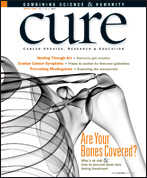What to Consider When Deciding on Immediate Reconstruction
The timing of post-mastectomy reconstruction can be impacted by many factors.
Women with early-stage breast cancer are typically considered the best candidates for immediate reconstruction following mastectomy. But the timing of reconstruction may be impacted by the need for radiation, among other factors. Some considerations to take into account:
Who is a good candidate? To undergo reconstruction, women should be in good physical health. Obese patients face a higher risk of surgical complications, and smoking interferes with blood circulation, making it more difficult to supply the necessary blood to the reconstructed breast. Medical conditions, such as diabetes and heart disease, can also cause complications. And women should be psychologically ready. If they harbor any doubts, the procedure can always be postponed, so they can gather additional information and weigh their surgical options.
Implants versus tissue flaps. Implants typically result in less scarring than a tissue flap procedure, which uses tissue from elsewhere in the body, such as the abdomen or the back, to reconstruct the breast. But the implants may not last a lifetime, requiring repeat surgery. Scar tissue also may form around the implant, called capsular contracture. Tissue flap procedures will provide a more permanently reconstructed shape and natural consistency, but the surgery may cause muscle damage and scarring where the donated tissue is removed. A newer procedure, called the DIEP (deep inferior epigastric artery perforator) flap, uses abdominal tissue but not muscle.
Saline versus silicone. Silicone, which has a more natural tissue feel than saline, became available again in 2006, when Food and Drug Administration officials approved marketing by two companies, contingent upon a 10-year study involving about 40,000 women to monitor any complications. The rupture of silicone gel implants may not be noticeable, whereas it is with saline. For that reason, FDA officials recommend MRI (magnetic resonance imaging) three years after implantation and every two years thereafter for women who choose silicone gel.
What about post-mastectomy radiation? Breast reconstruction may be delayed because of uncertainty about radiation. Radiation carries the risk of damaging or scarring the tissue of the reconstructed breast, particularly with a permanent implant. But there’s an alternative. At the time of the mastectomy, a surgeon can insert a temporary saline-filled tissue expander to preserve breast tissue and some of the breast’s natural shape. The expander, which is later deflated during radiation, allows all treatment options while still starting the reconstruction process.
Worried about recurrence? Breast reconstruction rarely obscures a cancer recurrence and shouldn’t be considered a significant risk, says the American Cancer Society.
FDA, Cancer Vaccine Updates and a Misguiding of Breast Cancer Treatment
February 5th 2024One cancer vaccine may still be years away from being available, a breast cancer test may be misguiding treatments for Black women and the review of two oncology regimens are being expedited by the FDA.
Listen
